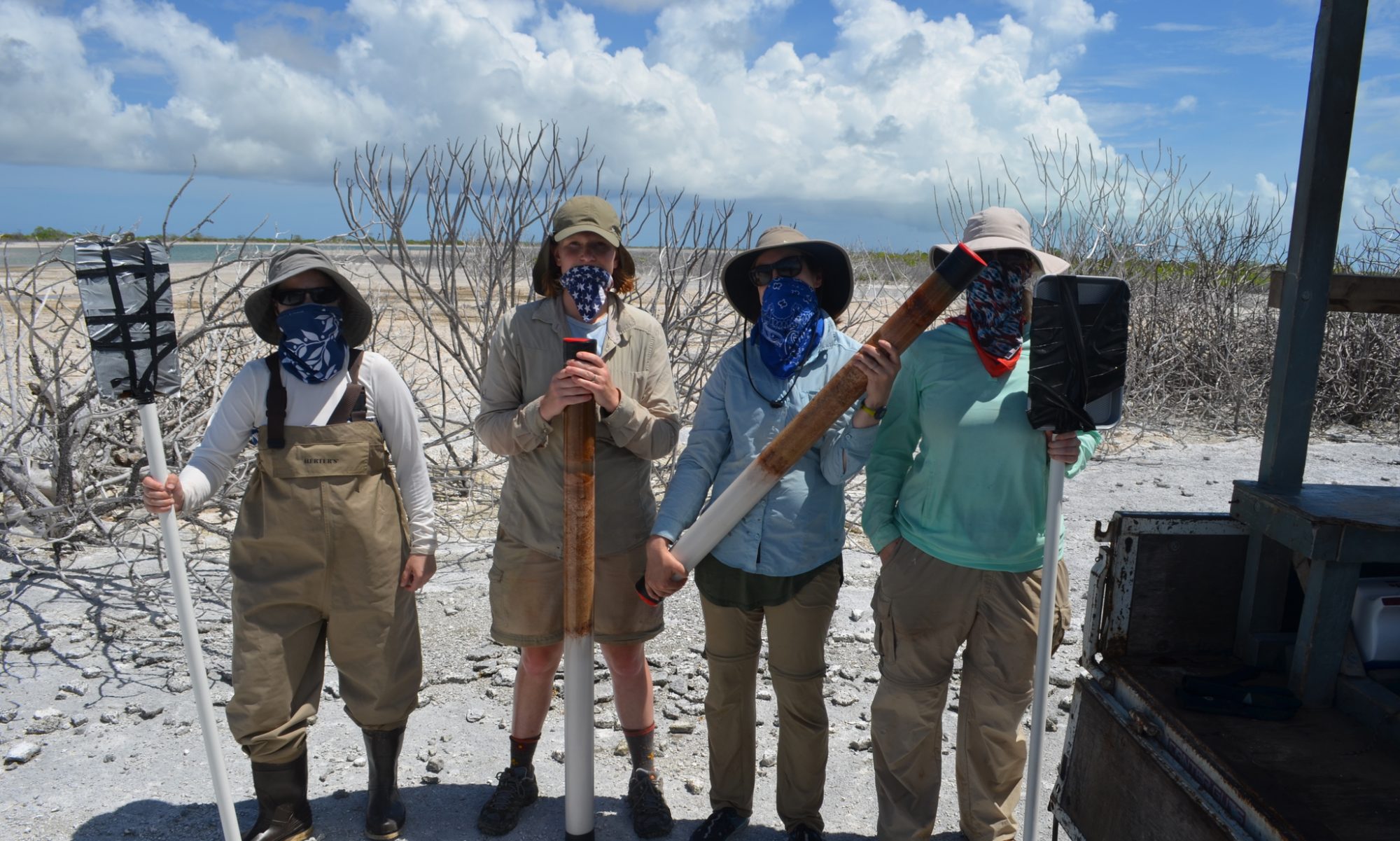We investigate climate change on interannual to millennial timescales using modern climate observations and paleoclimate data. Our current work involves developing new records of tropical Pacific and mid-continent climate change using lake and aeolian sediments. We are also focused on improving interpretation of paleoclimate data by coupling modern climate data and climate model simulations with paleoclimate observations.
TROPICAL PACIFIC CLIMATE VARIABILITY
The tropical Pacific is a region that lacks long instrumental records, yet imparts an enormous signature on global climate through the El Niño/Southern Oscillation (ENSO) and decade to century-scale changes in sea surface temperature. Thus, understanding the full range of climate variability here–both internal and forced–is critical for understanding many aspects of global climate change. Our past work has taken us to the Galápagos Islands, where we investigated past variations in the ocean and atmosphere, such as Holocene shifts in the Intertropical Convergence Zone (ITCZ), unprecedented warming over the 20th century, and changes in the frequency and intensity of El Niño events. We are currently using lake cores from Kiritimati to understand multidecadal to centennial changes in moisture balance over the last millennium. We are also working with Dr. Christina Karamperidou at the University of Hawaii on ENSO-mean state interactions in models and observations.
TRACKING THE HYDROLOGIC CYCLE WITH STABLE WATER ISOTOPOLOGUES
Stable oxygen and hydrogen isotope ratios found in carbonate and organic matter have served as proxies for seawater and meteoric water isotope variability for many decades. These records have often been interpreted in terms of broad-scale hydrological changes, yet our understanding of the real drivers of seawater and meteoric water isotope variability remains uncertain in many respects due to a lack of modern observations. Part of our research is centered on developing the sorely needed link between tropical Pacific paleo-isotope records and the physical and dynamical controls that drive stable water isotopologue variability. We are also launching a new project to investigate controls on midwestern precipitation d18O and dD with the Intensively Managed Landscapes CZO.
CHRONOLOGIES AND MECHANISMS OF LAST GLACIAL LOESS DEPOSITION
We are investigating the chronologies, provenance and potential paleoclimatic proxies in last glacial loess deposits across the midwest. Our overarching goals are to contextualize loess deposition rates relative to the advance and retreat of regional ice lobes and investigate potential paleoclimate proxies, such as terrestrial gastropod stable oxygen and carbon isotope ratios, in these deposits. This project is in collaboration with Dr. Willy Guenthner, UIUC Geology, and Dr. Dave Grimley, ISGS.
MICROBIAL BIOMINERALIZATION
Working in Kiritimati lakes, which contain remarkable microbial mat systems, provoked our lab’s emerging research interest in the biotic controls on carbonate precipitation. With new investigator funding from ACS, we are learning about the complexities of water-mineral microbe interactions. We are currently collaborating with organic biogeochemist Dr. Maggie Osburn (Northwestern University), Dr. Rob Sanford (UIUC), Dr. Ted Flynn (Argonne National Lab), and Dr. Bruce Fouke (UIUC) on this research.
